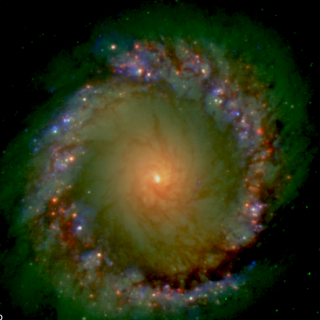Bibcode
Jimenez-Gallardo, A.; Massaro, F.; Capetti, A.; Prieto, M. A.; Paggi, A.; Baldi, R. D.; Grossova, R.; Ostorero, L.; Siemiginowska, A.; Viada, S.
Bibliographical reference
Astronomy and Astrophysics, Volume 627, id.A108, 21 pp.
Advertised on:
7
2019
Journal
Citations
12
Refereed citations
12
Description
We present a catalog of compact double radio galaxies (hereafter
COMP2CAT) listing 43 edge-brightened radio sources whose projected
linear size does not exceed 60 kpc, the typical size of their host
galaxies. This is the fifth in a series of radio source catalogs
recently created, namely: FRICAT, FRIICAT, FR0CAT, and WATCAT, each of
which focuses on a different class of radio galaxies. The main aim of
our analysis is to attain a better understanding of sources with
intermediate morphologies between FR IIs and FR 0s. COMP2CAT sources
were selected from an existing catalog of radio sources based on NVSS,
FIRST and SDSS observations because they have (i) edge-brightened
morphologies typical of FR IIs, (ii) redshifts z < 0.15, and (iii)
projected linear sizes smaller than 60 kpc. With radio luminosities at
1.4 GHz 1038 ≲ L1.4 ≲ 1041
erg s-1, COMP2CAT sources appear as the low radio luminosity
tail of FR IIs. However, their host galaxies are indistinguishable from
those of large-scale radio sources: they are luminous (-21 ≳
Mr ≳ -24), red, early-type galaxies with black hole
masses in the range 107.5 ≲ MBH ≲
109.5 M⊙. Moreover, all but one of the
COMP2CAT sources are optically classifiable as low-excitation radio
galaxies, in agreement with being the low radio luminosity tail of FR Is
and FR IIs. This catalog of compact double sources, which is ˜47%
complete at z < 0.15, can potentially be used to clarify the role of
compact double sources in the general evolutionary scheme of radio
galaxies.
Table C.1 is also available at the CDS via anonymous ftp to http://cdsarc.u-strasbg.fr
(ftp://130.79.128.5) or via http://cdsarc.u-strasbg.fr/viz-bin/qcat?J/A+A/627/A108
Related projects

The Central PARSEC of Galaxies using High Spatial Resolution Techniques
PARSEC is a multi-wavelength investigation of the central PARSEC of the nearest galaxies. We work on black-hole accretion and its most energetic manifestations: jets and hot spots, and on its circumnuclear environment conditions for star formation. We resort to the highest available angular resolution observations from gamma-rays to the centimetre
Almudena
Prieto Escudero

The Central PARSEC of Galaxies using High Spatial Resolution Techniques
PARSEC is a multi-wavelength investigation of the central PARSEC of the nearest galaxies. We work on black-hole accretion and its most energetic manifestations: jets and hot spots, and on its circumnuclear environment conditions for star formation. We resort to the highest available angular resolution observations from gamma-rays to the centimetre
Almudena
Prieto Escudero